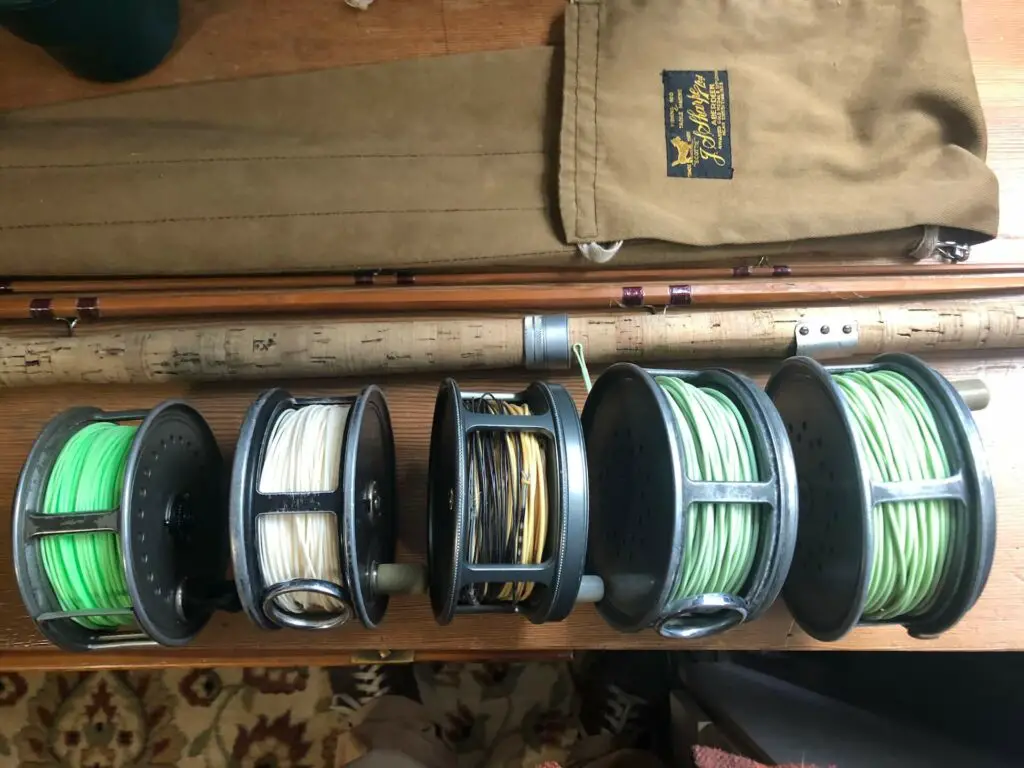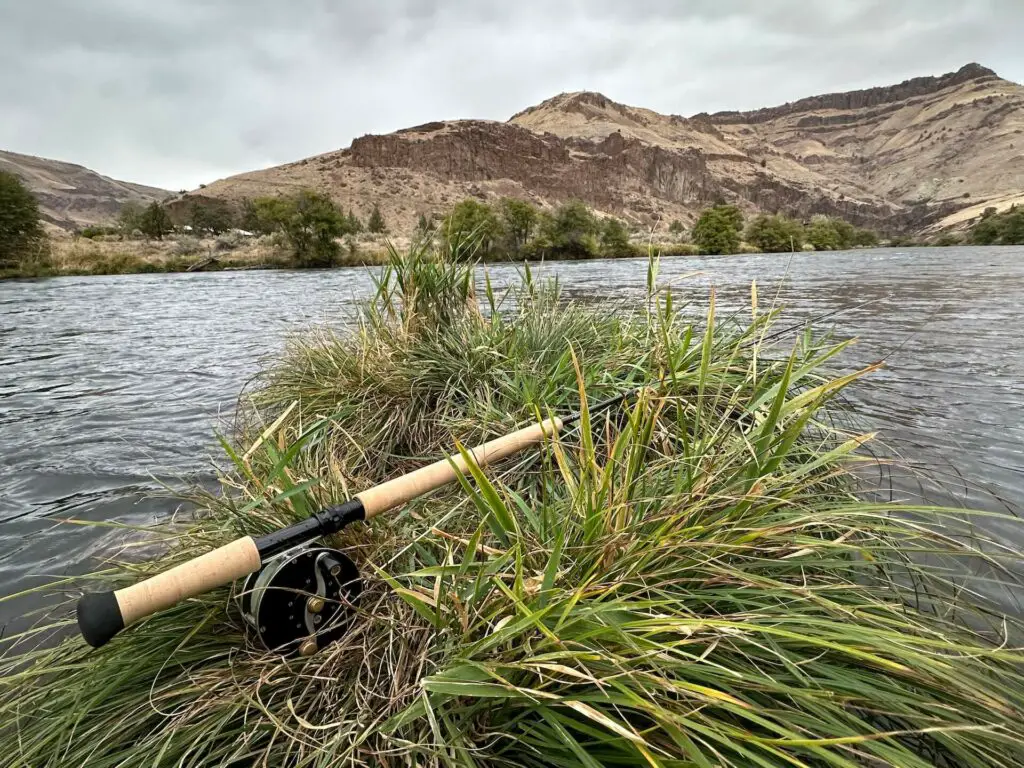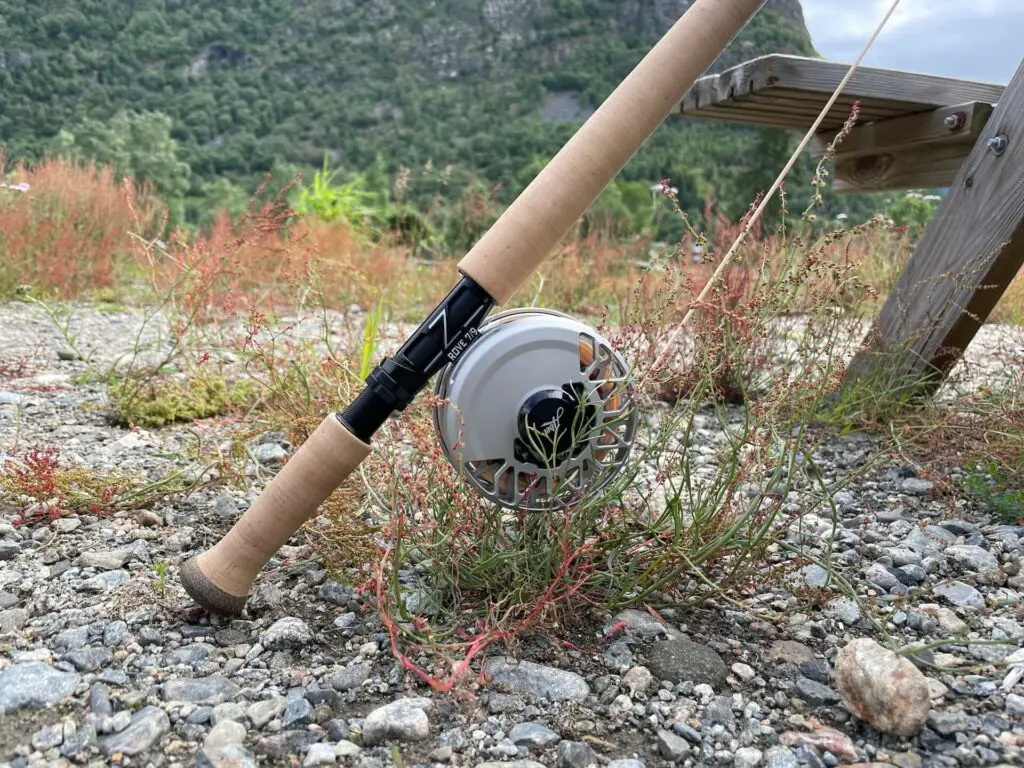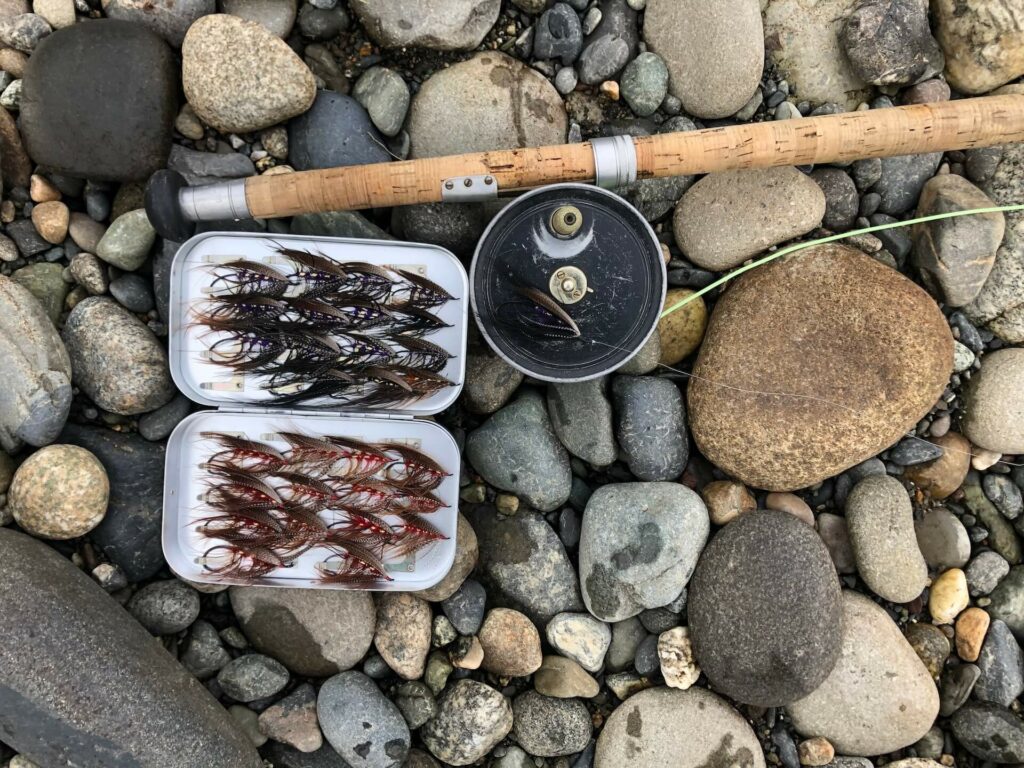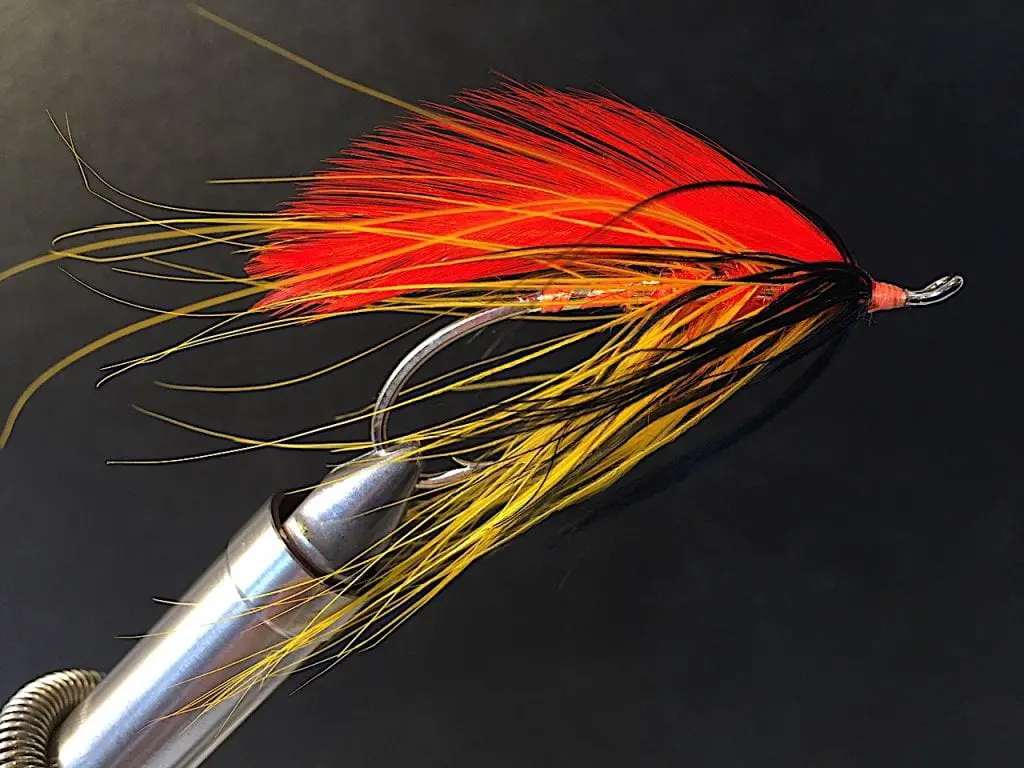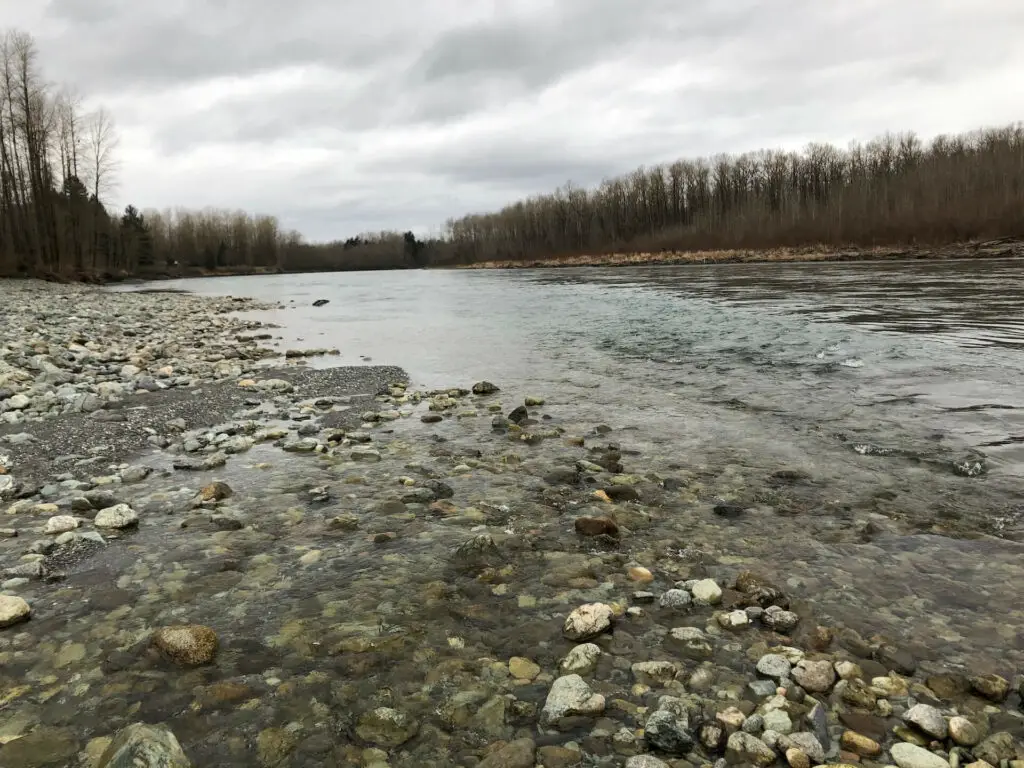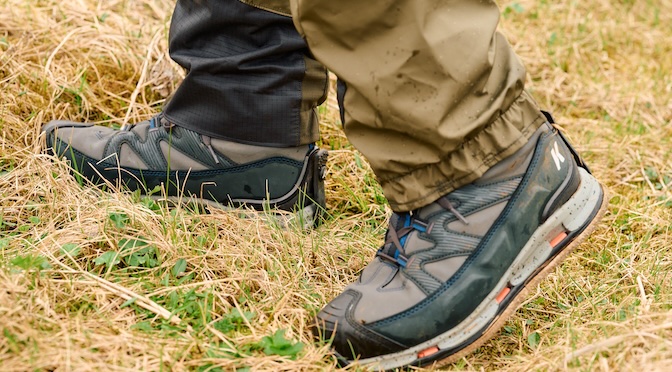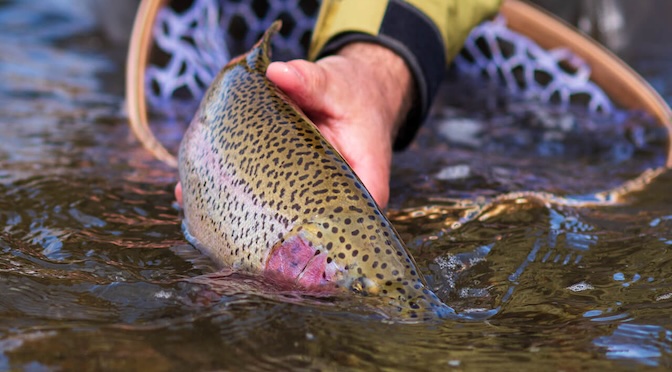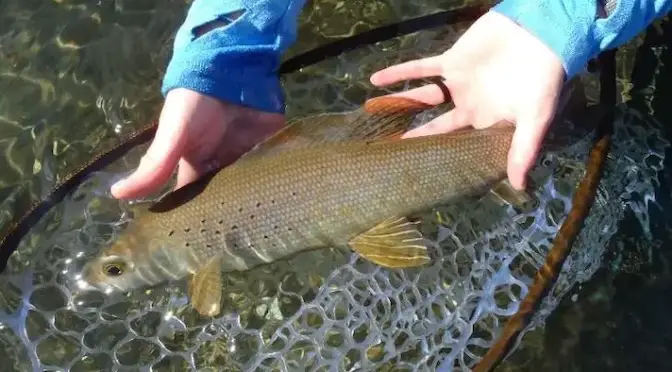Last updated on January 9th, 2024.
- Fly Fishing Steelhead: A How To Guide - February 17, 2023
- Brown Trout in the Outer Hebrides – South Uist Fishing - July 19, 2022
- Fishing Camp – Looking for Kamloops Trout - December 26, 2019
Fly fishing steelhead is a passion for life and living in Washington state a fly fisherman has lots of options.
Lowland lakes and beaver ponds in late spring. High lakes in the summer. Coastal cutthroat year round. But when Christmas arrives it’s time to reach for a spey rod and search for steelhead.
The fish
Steelhead (Oncorhynchus mykiss) are rainbow trout who migrate to saltwater, stay 2-3 years to fatten up, and then return to their natal streams to spawn in late spring. A two salt fish (i.e. a fish which has spent two years in the salt water) will be 9-11 pounds upon its return. A three salt fish will be 12-18 pounds. Steelheads don’t die after spawning so some get really big. The Washington state record is 35 pounds. The biggest fish enter rivers in January. The wild run peaks February to April. In May and June most of the fish are spawning. They return to the salt after spawning.
The spring season can be chancy. Sometimes the runs aren’t big enough to allow fishing. Spring rains can put rivers out. It makes any caught fish a thing to be treasured and released quickly. I don’t even hold fish up for a picture any more. I take a few pics of a quiet fish at my feet.
Classic Spey Tackle
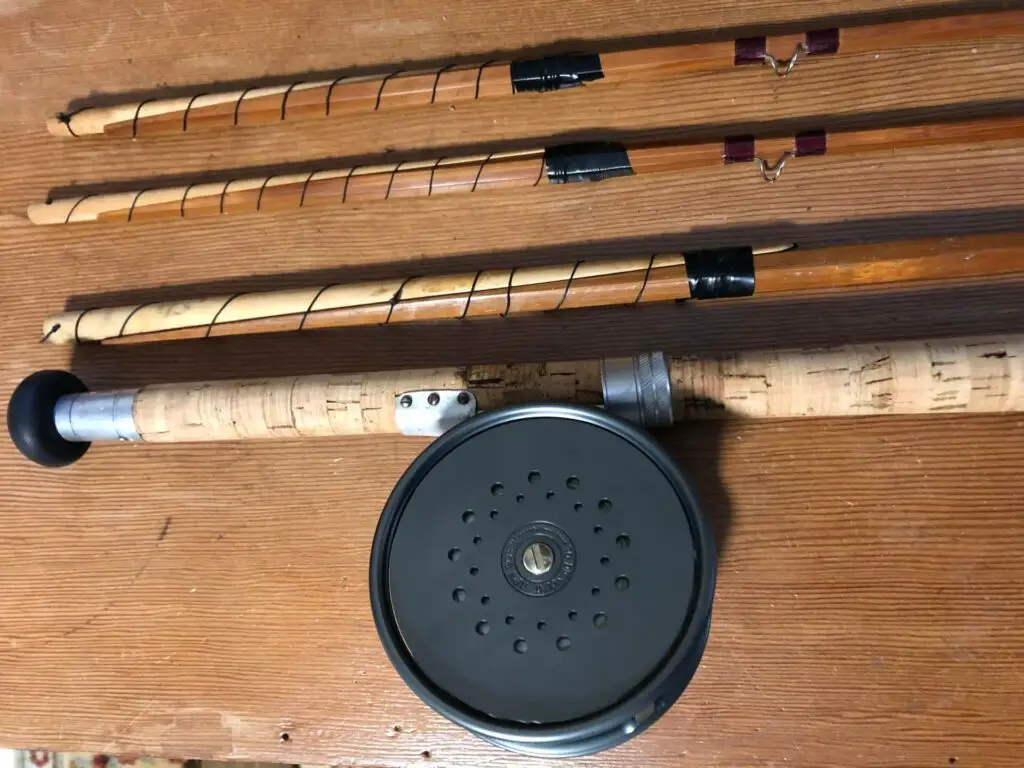
I love fishing classic tackle. My favorite spey rods are a Sharpes of Aberdeen spliced 13′ 9 weight bamboo rod and a Sharpes of Aberdeen spliced 12′ 8 weight bamboo rod. Spliced fly rods use tapered ends instead of ferrules. You tape the ends together which results in a limber one piece action and enables the rod to stand up to the torquing of spey casts.
I pair the Sharpes bamboo rods with a heavy 4′ or 4.5″ Hardy or JW Young or JS Sharpes Gordon reel. These reels have the size to hold a large spey line and 200 yards of backing and the heft to keep the bamboo rod from feeling tip heavy.
There are many great spey lines. Most anglers choose skagit heads or commando heads with a short accelerated taper that’s easy to cast and is capable of turning over heavily weighted flies and a 10-15 foot sink tip. The lines cast a mile but you need to strip, strip, strip the running line in at the end of each cast to be able to make another cast. I prefer a mid-belly spey line of 50-60 feet which casts a 15′ sinking tip without stripping. A 15′ type 6 fast sinking tip is my go-to line, but I may opt for a type 3 slow sinking line for soft currents and shallow tailouts.
Leaders are simple: a 4-6 foot length of 10-12 pound test maxima or 10-12 test Fluorocarbon. Change your leader every day to keep it strong.
Modern Day Steelhead Tackle
When it comes to selecting a fly rod and reel for steelhead fishing, there are a few factors to consider, including the size of the fish you’ll be targeting, the size of the water you’ll be fishing, and your personal preference in terms of casting style and feel. Here are some general guidelines to follow:
Fly Rod for Fly Fishing Steelhead
For steelhead fishing, you’ll generally want a rod in the 7 to 9 weight range. A 7 or 8 weight rod is suitable for smaller steelhead in smaller streams, while a 9 weight is better suited for larger steelhead and bigger rivers. A medium-fast to fast action rod is typically preferred for steelhead fishing, as it allows for longer casts and better control when fighting fish. Make sure to check our “Guide to the Best Steelhead Fly Rods” if you’re looking for a new rod.
Fly Reel
Look for a reel that has a good drag system, as steelhead are known for their powerful runs and can easily strip line off a poorly performing reel. The reel should also have a large arbor design to allow for quicker line retrieval.
Key Takeaway: Overall, it’s important to choose a setup that feels comfortable and balanced in your hands, as you may be casting and fishing for long periods of time. It’s also a good idea to consult with local fly shops or experienced anglers in the area where you’ll be fishing for more specific recommendations based on local conditions and preferences.
Flies for Steelhead Fly Fishing
Steelhead aren’t picky. Large Intruder flies are the rage among fly anglers today. Marabous, tube flies and shrimp patterns like the General Practitioner are also popular. I fish the traditional spey flies from Scotland or the northwest spey flies developed by Syd Glasso in the 1960’s. I’ve also caught them on a fully dressed 1/0 feather wing Torrish Atlantic salmon fly or a New England style Pink Ghost streamer tied on a size 4 8X long hook.
The Scottish spey flies like the Red King or Purple King or Lady Caroline are “drab combinations of gleanings from moor, riverbank and farmyard” to quote Buckland and Ogelsgby’s A Guide to Salmon Flies. They have long body hackles which come alive in soft currents and an understated mallard wing set low over the body.
Glasso’s spey flies are brighter and often have a tented wing of four rooster hackles. Glasso used blue eared pheasant for body hackles. Heron is illegal to possess in the United States so modern tiers substitute shlappen or blue eared pheasant or burned goose feathers. My favorite Glasso patterns are the Black Heron and the Sol Duc.
Spey fishing technique
The biggest mistake modern spey anglers make is not fishing the river in front of them. Modern graphite spey rods and lines allow you to cast across the river. Just because you can doesn’t mean you should. Cast too far and you’ll miss the sweet spot. Most runs have a well developed seam or structure like rocks right in front of you. The fish are there. Cast past that and you’ll be fishing beyond the fish. Put your fly where the fish are. Cast too far and you can’t control the fly. Winter fish want a slow moving fly. You need to be able to mend the line to avoid having the fly whip back to you. The longer the cast the harder it will be to mend your line and get a good drift.
Same thing applies to wading. I rarely go in over my knees. Steelhead, especially undisturbed fish, will be lying in surprisingly shallow water close to the bank as long as there’s cover or a riffle nearby. This angler has wisely decided not to wade past his knees.
One other thing on fly fishing steelhead: First angler doesn’t always get the fish. I’ve been amazed how many times I’ve hooked a fish following another angler through a run. Maybe I caught a moving fish. Maybe the first angler was fishing too far out. Maybe I had a different color. I remember one time when I fished the same riffle three times in a row using three different flies and caught a fish on the third pass. You can be confident any time your fly is in the water.
Tight lines.
FAQs
What is steelhead and why are they a popular target for fly fishing?
Steelhead are anadromous fish, meaning they are born in freshwater, migrate to the ocean, and return to their natal rivers to spawn. They are highly prized among fly anglers due to their strength, acrobatic jumps, and challenging nature. Steelhead are known for their aggressive takes and powerful runs, making them an exciting target for fly fishing enthusiasts.
What type of fly rod and line setup is recommended for steelhead fishing?
When targeting steelhead, a 9 to 10-foot fly rod in a 7 to 9 weight range is commonly used. This provides the necessary power to handle the strong runs of steelhead while still maintaining sensitivity for detecting subtle takes. In terms of fly lines, weight-forward floating or sinking-tip lines are typically used, depending on the fishing conditions and depth at which steelhead are holding.
What are some effective fly patterns for steelhead?
Steelhead can be selective when it comes to fly patterns, but some popular and effective choices include:
Egg Patterns: Mimic the eggs of spawning fish, a common food source for steelhead.
Stonefly Nymphs: These larger nymph patterns imitate stonefly larvae, which steelhead often target.
Spey Flies: Traditional spey flies, such as the Intruder, Green Butt Skunk, or Lady Caroline, can be effective when swung in front of steelhead.
Streamers: Large streamer patterns, such as Woolly Buggers or Sculpin patterns, can imitate baitfish and trigger aggressive strikes.
What are some techniques for fly fishing steelhead?
Steelhead can be targeted using various techniques, including:
Swinging Flies: Casting and swinging flies across the current, allowing the fly to move naturally and entice steelhead to strike.
Nymphing: Presenting nymph patterns near the bottom using indicator rigs or Euro nymphing techniques.
Dry Fly Fishing: In certain situations, steelhead can be enticed to take dry flies, particularly during summer or fall when they are more likely to rise to the surface.
When and where is the best time to fly fish for steelhead?
The best time for steelhead fishing varies depending on the region and river system. Generally, steelhead runs occur in the fall, winter, and spring, with peak fishing times varying by location. Researching local steelhead runs, hatchery stocking schedules, and consulting with local guides or fly shops can provide valuable insights on timing and prime fishing locations.
What should I consider regarding conservation when fly fishing for steelhead?
Steelhead populations face conservation concerns, and it’s essential to practice responsible catch-and-release fishing. Use barbless hooks, handle fish gently with wet hands, and minimize their time out of the water. Follow local regulations and participate in efforts to protect and restore steelhead habitat for future generations of anglers.



